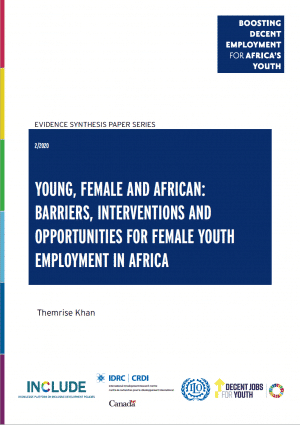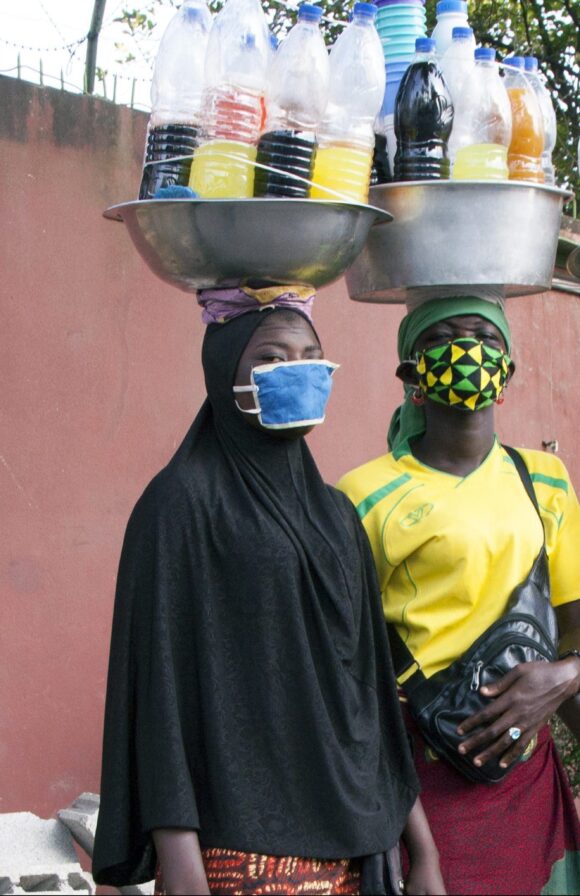
A meaningful gender analysis is a prerequisite for research projects that seek to have an inclusive and sustainable impact on economic opportunities for youth in Africa. Young women continue to face a number of barriers to labour market participation and context-specific gender norms, which are a powerful force influencing the outcomes of youth employment programmes and studies. Policy-oriented research in this domain must integrate gender into its design and throughout project cycles. To ensure that women’s specific voices and experiences are heard and taken into account, scholars should deepen their understanding of the context, challenges and opportunities, as well as possible unequal gendered power relations that may influence the results of their study. Research teams in the frame of the Boosting Decent Employment for Africa’s Youth joint initiative are actively integrating gender analysis into their respective research frameworks. During our second roundtable discussion, the researchers shared their tools, strategies and methods to successfully include gender in qualitative and quantitative research.
The second virtual roundtable discussion in the frame of the Boosting Decent Employment for Africa’s Youth partnership took place on 24 June. In a similar set up to the first virtual meeting, the discussion had two objectives: First, the group explored the context of female youth employment in Africa with the presentation of a newly-released evidence synthesis paper Young, female and African: barriers, interventions and opportunities for female youth employment in Africa. Secondly, the eight research teams engaged in a practical conversation on the integration of gender analysis into their research on youth employment in Africa.
A synthesis of relevant literature by Themrise Khan, independent consultant, indicated that there are four key barriers that prevent young women in Africa from joining the workforce. These are social and cultural, economic, conflict and fragility, and skills development. Her evidence synthesis paper also pointed out that the most successful interventions in addressing these four barriers were a combination of those that support wellbeing, capacity building and access to jobs for women, as well as entrepreneurship. Programmes promoting microcredit and those tackling only one of the barriers generally yielded disappointing results. In addition, two emerging areas of opportunity were identified as holding great potential for employment for young women: mobile telecommunications and the digital economy, and the informal economy, although its relevance and importance depend on the region of the continent. Ms Khan also shared the methodological challenges she encountered during the process of synthesizing and distilling the available literature, including: lack of regional and gender disaggregated data and the inconsistent definitions of youth used by different interventions.
Using this portrait of gender inequalities in the African labour force, research teams discussed the practicalities of integrating gender analysis into their research designs and approaches. According to the Nutrition and Food Security Association (ANSA) team from Mozambique, who started the conversation, projects must incorporate an intersectional approach that acknowledges that boys and girls experience life differently based on their cultural, economic, religious, ethnic and age context. The team also highlighted that no research activity is neutral, but is influenced by power relations that must be recognized throughout key phases of the study, including between researchers and research participants. Furthermore, the team emphasized the importance of making sure that female and African authors are represented in the literature to be reviewed.
The research teams complemented ANSA’s rich experience by sharing their strategies and approaches for integrating gender equality throughout the research cycle. To ensure the better integration of gender into research projects, it was suggested to consider the following key takeaways:
Structure of the research team:
- Build mixed research teams of men and women to reflect diversity considerations
- Train and sensitize teams on unequal power relations
- Include and encourage female trainers and mentors
Research methods:
- Make research hypotheses gender sensitive and formulate gender-sensitive research questions
- Use gender-sensitive research methods and methods that take into account the needs, opportunities and constraints of men and women
- When selecting data collection tools and elaborating fieldwork plans, pay specific attention to invisible barriers, such as women’s absence from public spaces or their lack of confidence in public expression; for interviews or group discussions, identify ‘safe’ spaces where women are willing and able to spend time and respond freely to your questions
- Go beyond purely economic matters and include an interdisciplinary lens to complement your research with other dimensions of gender-specific constraints such as demand for soft skills or mental challenges
- Pay attention to the politics of informed consent for all research, which should be more than just ‘paper permission’; take measures to increase the power of young women to say no
Data collection:
- Collect sex disaggregated data
- Understand the context-specific gender norms and possible unequal gendered power relations, and adapt your data collection methods according to the potential barriers:
- Women’s lack of access to, and familiarity with, digital technology may rule out the use of some survey methods
- Language and literacy are key to unlocking women’s full participation in research
- Time issues are crucial when scheduling interviews and work with women
- Be aware of local household decision-making dynamics. If necessary, interview/survey both male and female household members to capture diverse perspectives
Data analysis and reporting:
- Analyse data in a gender-sensitive way (it is not only about how many women were trained, but what impact the training had on them and why it mattered)
- Consider gender-specific norms and possible unequal power relations, also on the institutional level, during data analysis and reporting
- Engage in meaningful reporting by highlighting the individual and collective reflections of young female respondents
Research dissemination:
- Use gender-sensitive language and report data in a gender-sensitive way
- Give preference to communication strategies that include women’s voices directly alongside results
- Consult with respondents on whatcan be shared and when, and invite them to dissemination events
Gender blind research is no longer an option – for lasting change, researchers must consider the differentiated impacts that their initiatives can have on vulnerable and marginalized groups, including young women. Research teams and partners in this initiative collectively concurred that all youth employment programmes and research projects should integrate gender and diversity analysis to tackle the systems that perpetuate inequality. To do so, researchers must have aprofound and holistic understanding of the context in which women operate to tackle these inequalities and offer sustainable solutions that address root causes that affect young women’s economic opportunities.


